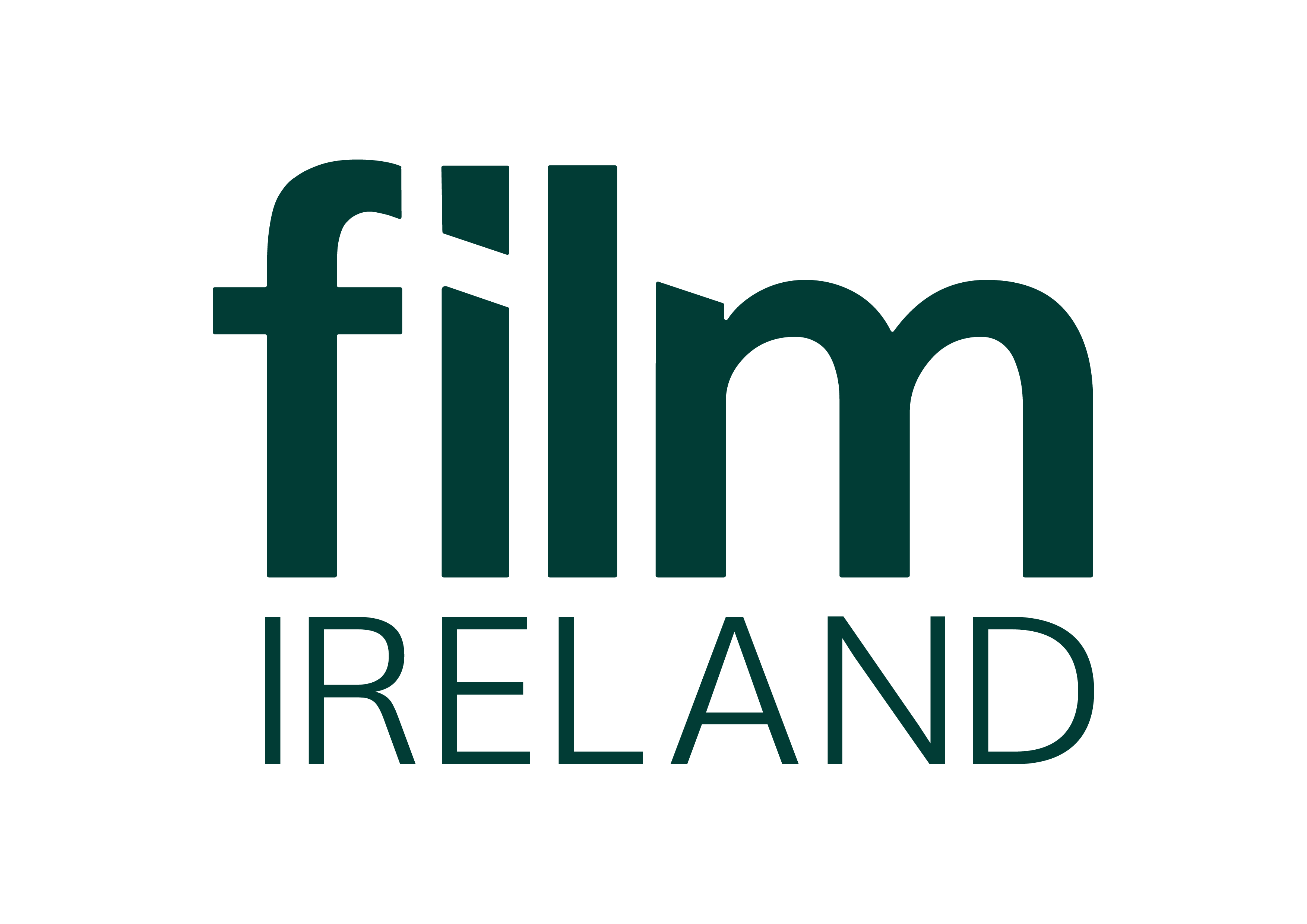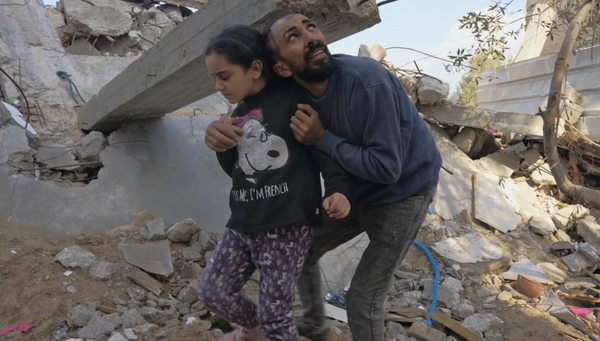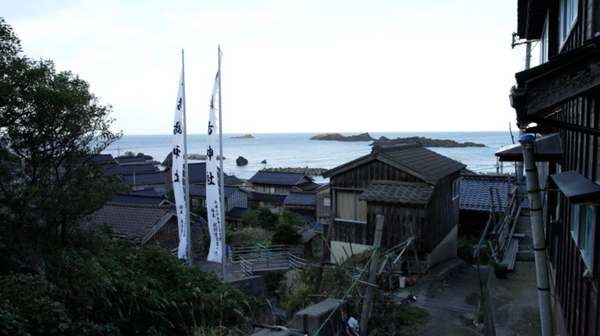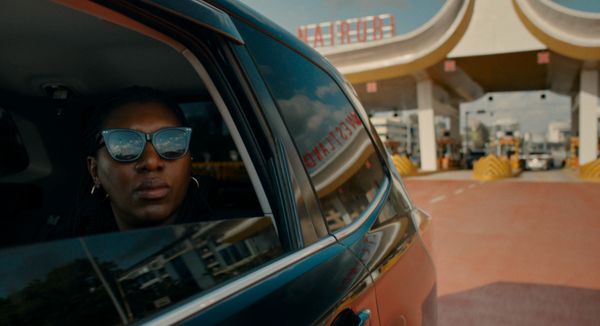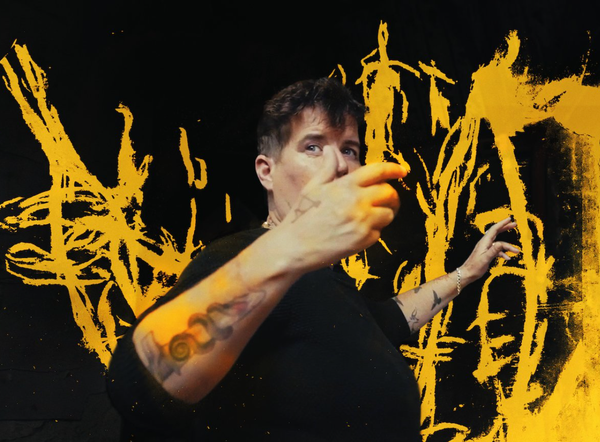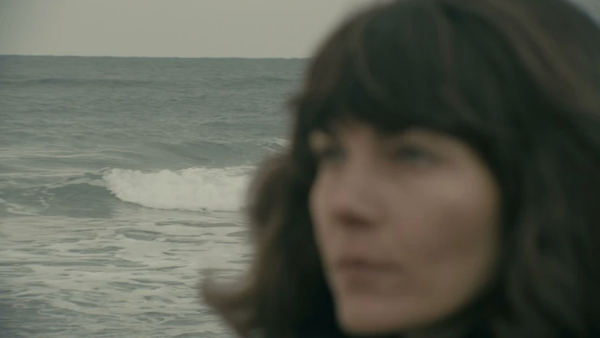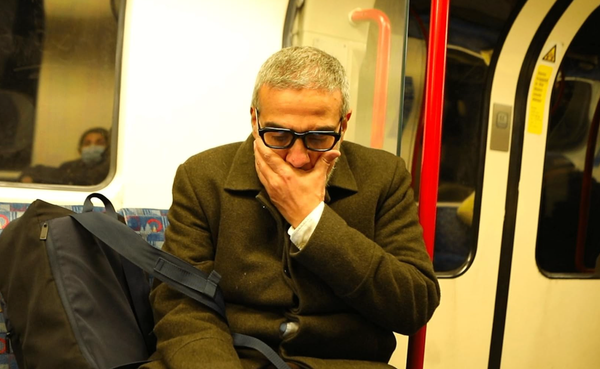In this article, writer and contributor Khushi Jain interviews Molly Kiely, director of the short documentary At the Bottom of the Reen.
The film opens with a song. ‘Well, come and sit beside me, love’, a woman sings, drenched in the warm glow of an old lampshade in a pub in County Tipperary. The pub is Buddy’s, and this is its story. Director Molly Kiely, with a micro-crew of three other people, travelled to Glengoole. This is a fading mining town in Ireland, where they filmed Sinéad, the third-generation proprietor of Buddy’s, who spoke the role played by this ninety-year-old establishment in the face of rapidly changing rural dynamics. The beating hearts of the pub, which is itself the beating heart of its community, are fire and music. Buddy’s is everything from a ‘home’ and ‘family’ to a ‘source of information’ for the locals of Glengoole. But dwindling populations in the area have made its future uncertain.
Kiely’s first ‘grown-up’ film (after her graduation film True Wind), At the Bottom of the Reen is a deeply personal short documentary pulsating with beautiful songs and even more beautiful people. Shot by cinematographer Ted Daly, it captures a community in flux and the evolving traditions of a pivotal rural pub. Just before the film’s premiere in Belfast at Docs Ireland 2025 (in competition), I had the pleasure of talking to Molly about the songs, the fires, and the future of Buddy’s.
Where did the idea for this film come from?
It came from a conversation I had with my elderly uncle who lived in Glengoole. He was talking about the isolation he experiences in the rural community today. Forty years ago, Buddy’s Pub was an amazing outlet for him, but now the pub only opens once a month, on the first Friday. The pub night is hence called ‘First Friday’. I was struck by this because I was aware of the Catholic ritual of a novena, where one attends mass every first Friday for a certain number of months with a specific intention. Considering how the Catholic Church had its iron grip on communities all over Ireland in the not-so-distant past, I wanted to see if Buddy’s (and the rural pub in general) had become a new place of ritual. This film documents the pub as a critical town hall for the locals.
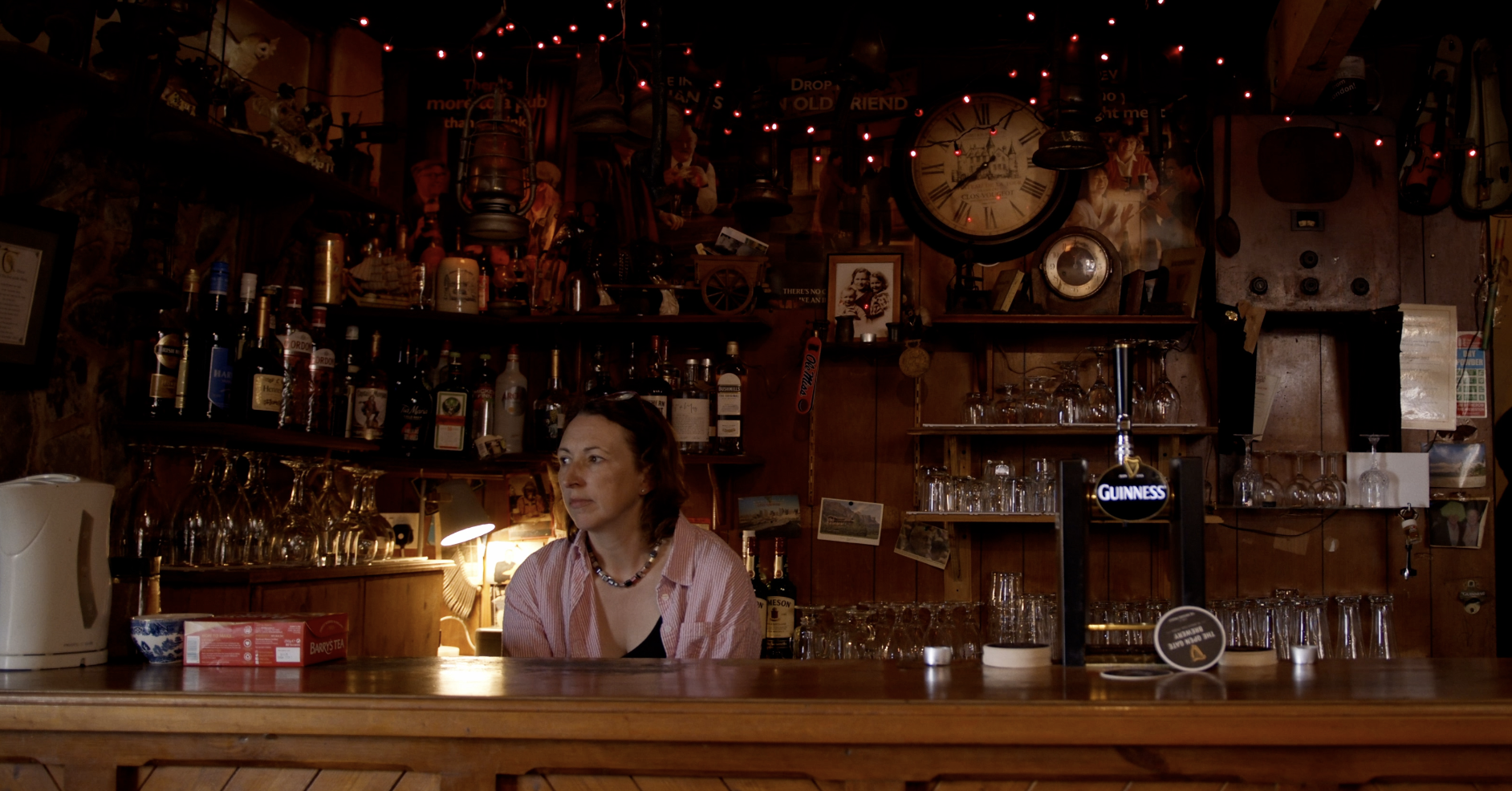
Can you expand on what you mean by ‘a new place of ritual’?
A place where, as was the way with weekly mass, people met their neighbours and got together to celebrate a shared love of music. Maybe Buddy’s was a new religion? Music can be such a spiritual affair, especially in the context of Ireland’s changing rural dynamics. On further research, I realised that the story that needed to be told was of Buddy’s long-standing centrality to the community, Sinéad’s deep affinity with the pub and the people, and the life of it all – the music. The bigger story seemed to be the struggle of keeping the pub alive in the face of population decline.
Let’s talk about the songs in the film. How did you go about selecting them?
I chose the songs based on their emotive context. I didn’t ask the musicians to play any particular songs, but rather to play songs with particular emotions.
I see that you titled your film with the refrain from the last song.
That song was written and sung by Sinéad’s father, Buddy. One evening in the 1980s, a Kilkenny radio station had come to the pub and recorded it. Luckily, Sinéad had a copy of it on a cassette. Once I heard it, I knew it had to be the title.
The short begins and ends with fire. This fire is the hearth of the home that is Buddy’s. Its warmth reverberates throughout the entire film. Given its narrative centrality, I couldn’t help but see it as a metaphor for phoenix-like resurrection – a resurrection of Buddy’s as well as the film. Was this in your mind at all?
I definitely intended the fire to be a symbolic pillar. It’s still so central to the pub today, and for so long, as Sinéad says, it was so central to life in rural Ireland. Throughout the film, she talks about trying to keep traditions alive, be it by teaching music to the local children or by keeping the fire lit throughout the year. I actually thought of Sinéad as the fire of Glengoole, keeping its spirit aflame. The burning of turf is of course a concern in relation to environmental changes, but at the same time, it is also a way of thinking about societal changes. It says something about the cyclical nature of life – how the once strong and rooted rural community may be gradually disappearing. The climate is changing both environmentally and socially.
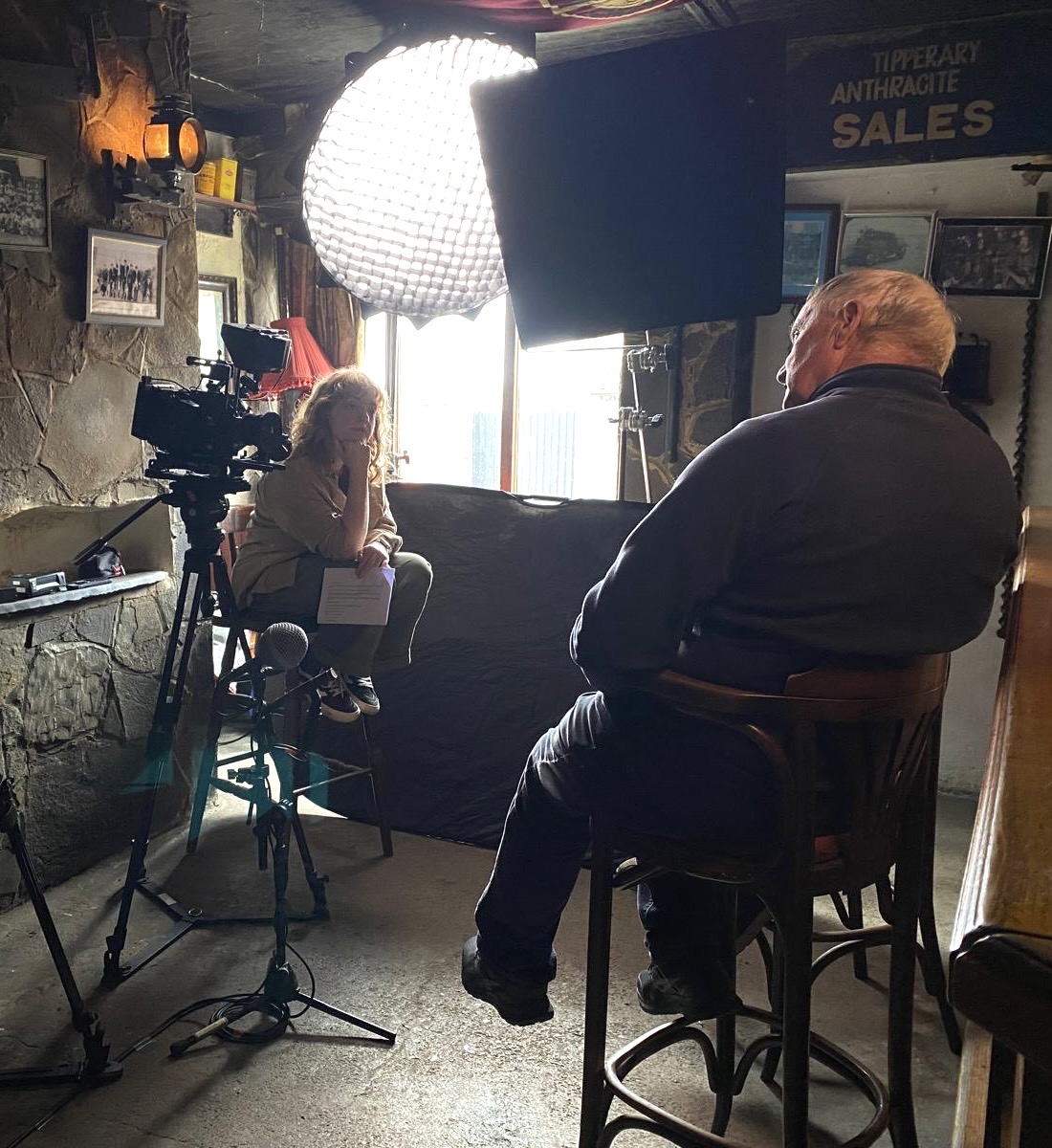
One of the locals compares turf to music, both being tradition in his eyes. This connects fire to music, the two leitmotifs of the film. What sort of a relationship did they have in the technical conceptualisation of the project for you? I am asking specifically given the visual presence of fire and aural presence of music.
Both were essentially the foundations of the film’s concept, so it was wonderful that the men in the bog equated the two. I intended this film to be about the spiritual element of playing music. After spending time in Glengoole, I realised that for the musicians in Buddy’s Pub, fire was central and even had a hypnotic quality. And so, traditional music and the tradition of the turf fire became two constants in the film, which itself is about a changing community. The key industries in Glengoole were coal and peat, the extractions of which have been halted in recent times. While this is important for the environment, it has had very real and lasting effects on the community – the big one being unemployment. In times of hardship, we turn to art for solace, and that’s why Glengoole has such a strong musical tradition. Fire is the representation of a burning desire for community, music and the maintenance of tradition.
How did the locals react to the camera and your questions?
Everyone in Glengoole was very welcoming to myself and the crew. For our first couple of visits, people were definitely hesitant. I think they expect you to be extractive, taking what you need and disappearing, never to be seen again. It was quite important to me that we became as much part of the community as we could. So, every day that we were down there, we made sure to spend time without the camera, just hanging out and getting to know everyone. When they realised we weren’t from RTÉ, people tended to ease up.
Sinéad (who seems awfully sweet, by the way) responds to the question of the future with ‘I don’t know’, as well as the possibility of selling. Buddy’s is firmly rooted in tradition and the past, but its future is uncertain. What role do you think, if at all, does this doc play in this future?
I’m hoping that this film might start a conversation in places like Glengoole about the future of communities and rural pubs such as Buddy’s. It is easy to assume that these places are rooted in the past and that’s where they should stay, but the film shows just how important Buddy’s is to its people – the ones who were, are and will be.
Maybe it will be an encouragement to support local communities a bit more. If this film has any impact like that, I would consider it a success.
In Sinéad’s closing dialogue, she is talking about how the pub is real. She says ‘I have never thought about it like that before.’ The film made her realise something quite poignant about Buddy’s and herself. Did you have any epiphanies while working on the project?The epiphany that I had was that rural communities have so much potential. In the face of the ongoing housing crisis, particularly in Dublin where I live, these areas offer tremendous opportunity for new population growth. In a world where, with each passing day, we are becoming more and more competent in working remotely, places like Glengoole could be a dream come true for city residents looking for bigger spaces and fresher air. The communities are wonderful as well, and if they just received a bit more backing from the government, they could blossom into life once more.
Lastly (this is a personal one), throughout the film, Buddy’s is referred to as a home, public home, extended family, social outlet, source of information, community service, social fabric and a vessel that holds everyone. It is a very important third space for the people of Glengoole. I saw the film with a friend, in a small flat in Pisa – also a third space in a way – and the company definitely enhanced my experience. What kind of a viewership do you imagine for it?
I hope it will be seen by an audience that cares about rural communities. I would like it to be screened in rural areas around the world, to create a sense that although our lands may be different, our struggles are very often the same.
Thanks so much for chatting with us, Molly.
At the Bottom of the Reen screened at Docs Ireland Programme 1 of the Competition Shorts, 2025 at Queens Theatre Belfast.
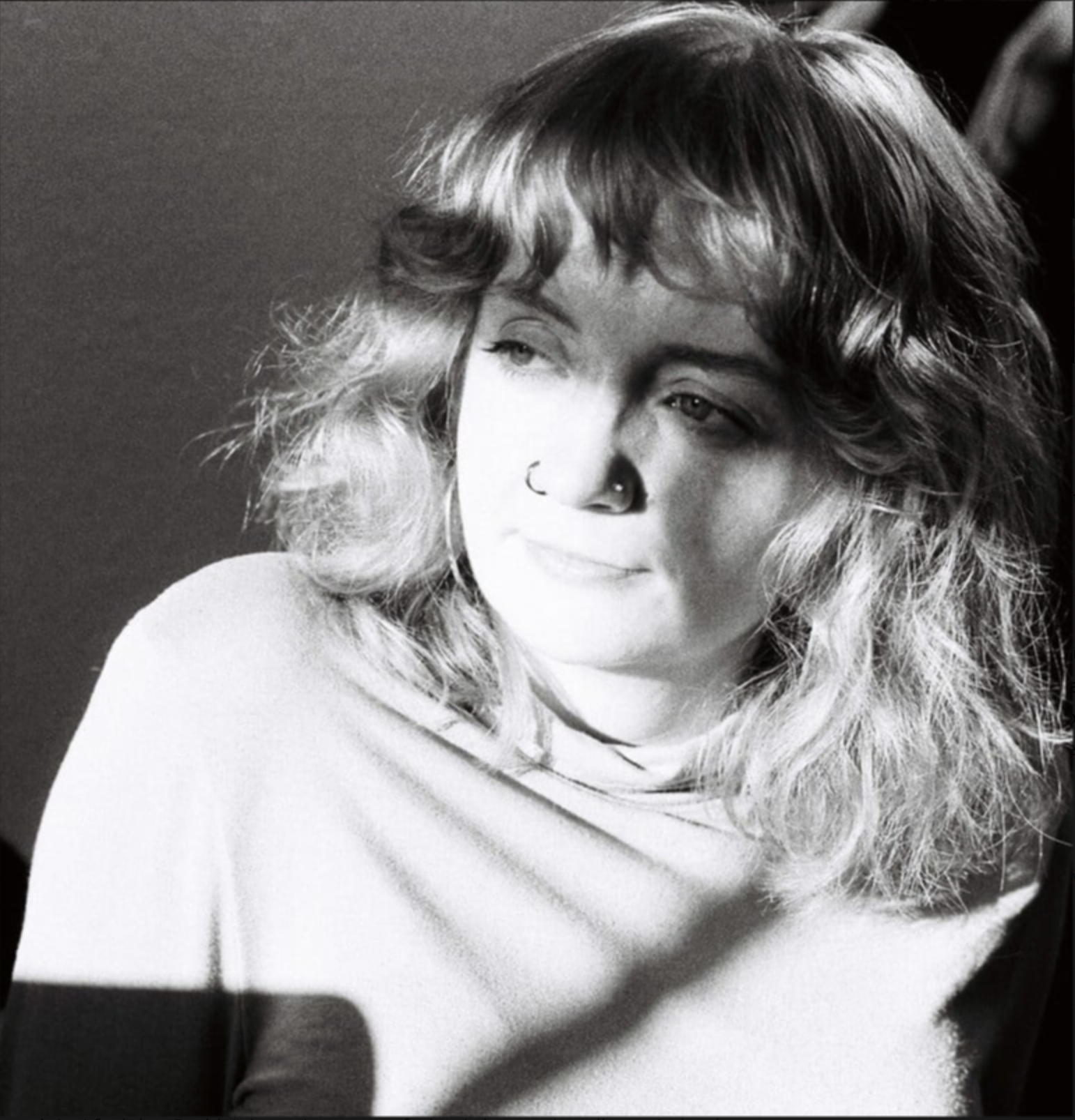
About Molly KielyMolly is an emerging director in Irish documentary film, launching her new short documentary At The Bottom Of The Reen. A 2023 graduate of Technological University Dublin, Molly has already earned recognition for her student films, winning multiple awards across Irish festivals. Her student success pits her as a filmmaker to watch. Beyond documentaries, Molly is also building a career in commercials, working with brands like Smithwick’s, Sport Ireland and Chill Insurance, where she showcases her distinctive storytelling style.
